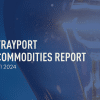In the power market, trading power from renewable energy is fast-paced and highly complex, to keep up with the large number of tradable products and the volatility of the market, automation has become a necessity.
Automating trade execution is ideally suited for liquid markets where high volumes of contracts are being traded. Due to the complexity and highly time-critical nature, it is unsurprising that the German intraday power market is amongst the most heavily automated, so much so that manual traders can find it difficult to keep up with algorithmic traders.
Traders operating in the intraday market are faced with vast amounts of market data, which all require analysis, and therefore automation makes sense in this type of highly pressured environment, allowing traders to utilise algorithms to achieve success. This can be seen in the spread of the algo effect into neighbouring markets through the push towards having a single energy market via SIDC (formerly known as XBID). With Phase 2 of the SIDC project now live, bringing in additional market participants as well as ongoing investments in transmission capacity, we can expect the use of automation to rise.
Can automation be successful in other markets?
The impact of the liberalisation of the 1990s and integration of European power and gas markets has resulted in the creation of highly liquid markets facilitating the route for different markets to benefit from automation. Within this, intelligent IT systems have a role to play in controlling supply and demand from the production side, especially when applied in the context of the rapidly evolving renewable energy trading market.
In addition to the power markets, we see automation being successfully implemented to achieve efficiencies, productivity and profitability for short-term gas trading as well as forwards and futures contracts in gas, emissions and crude oil markets.
- Short-term gas trading
- Forwards and futures
Short-term gas trading
The short-term gas market has a range of complexities, such as within-day auctions in Austria, contracts in MWh / day in France as well as the role of the OTC market within gas trading, making it ideally suited to benefit from the use of automation. Automation within short-term gas trading is not a new concept, a number of trading firms are already using automated solutions and many more are in the process of rolling out algorithms to automatically close positions, monetise storage assets and transmission capacity, or participate in balancing auctions. Though perhaps not as fast paced as other markets, traders using algorithms have the ability to quickly react to any fluctuation in prices more so than manual traders.
Forwards and Futures
Automation within trading has long featured in the wider financial market, and is now being used as a tool to respond to the rising challenges of new markets such as renewables. Indeed, some of the most active futures markets worldwide are crude oil (Brent, WTI) and US natural gas (Henry Hub), which already have a large number of algorithmic traders participating. In Europe we have seen record-level volatility in emissions create great opportunities for automated strategies.
The rise of LNG will continue to drive increased TTF futures volumes, as trading firms want to manage the price risk between global and European markets. The result is that calendar spreads as well as location spreads into other regional markets are increasingly hard to manage manually, creating great opportunities for traders with an appetite for automation.
In power markets, German Baseload has strong liquidity and provides great use cases for automated trading on the basis of technical indicators. Aside from the big benchmark contracts
In Europe, there are many regional hubs and market areas that still have a lower level of activity. Effectively using automation in this market will require strategies that use data from the more liquid products and combine it with fundamental data or other proprietary information.
What’s next for algo-trading?
Where markets are still heavily traded via voice or instant messenger, we may see innovators use artificial intelligence (AI) to capture this unstructured data and use it to have a better-informed algo.
AI, in general, has the potential to bring a new level of intelligence into energy trading. As some of our customers have already seen with their own AI-based trading algorithms, in certain situations the technology has already proven to trade as well as or better than its human counterparts. As liquidity in the broader energy markets increase, the potential for automation and AI is even greater.
Implications of automation in energy trading
Whilst advanced algorithmic trading is a pivotal part of future success, experienced traders still play a vital role in the success of trading firms, the key is good trading tools which allow for the two to co-exist, making a hybrid style of trading as easy as possible for traders. The energy trading industry is ever changing, and we believe that the need for companies to maintain a competitive edge will remain a mainstay in determining success. Good algo-trading tools can be a key part of achieving success.
This article was first published in Energate Messenger, October 2020.




